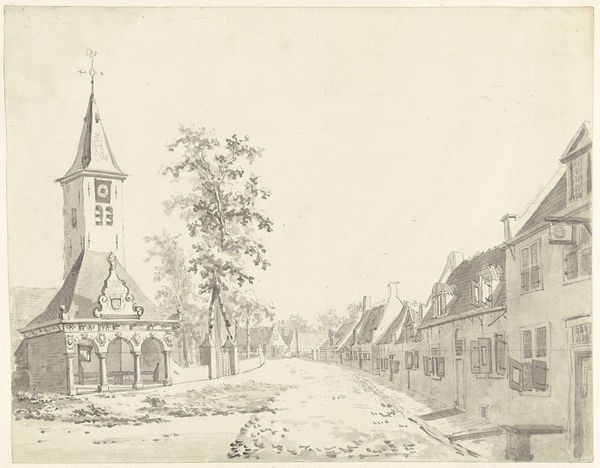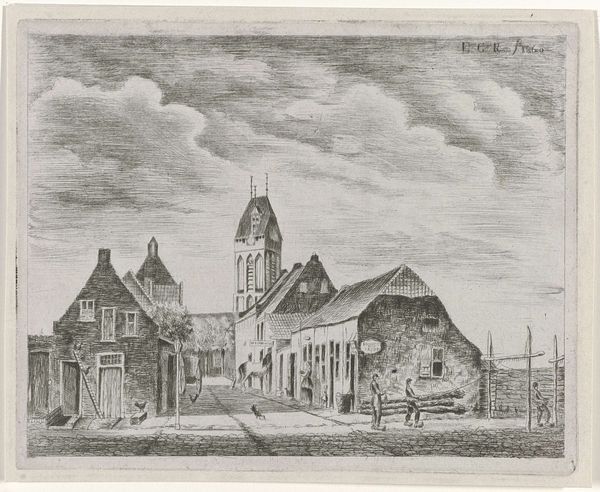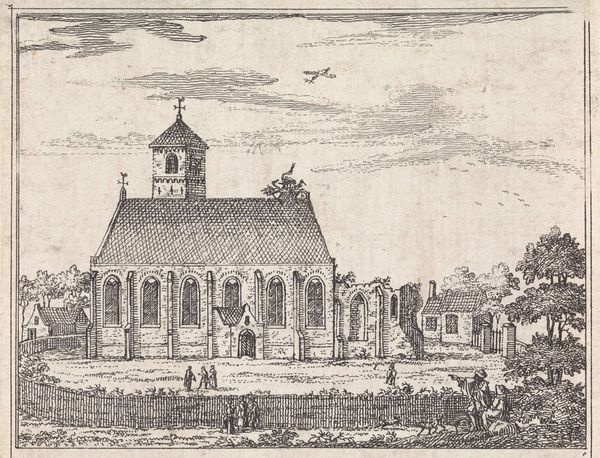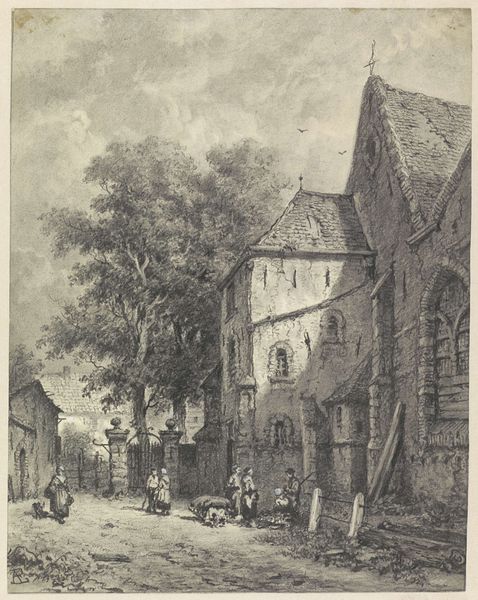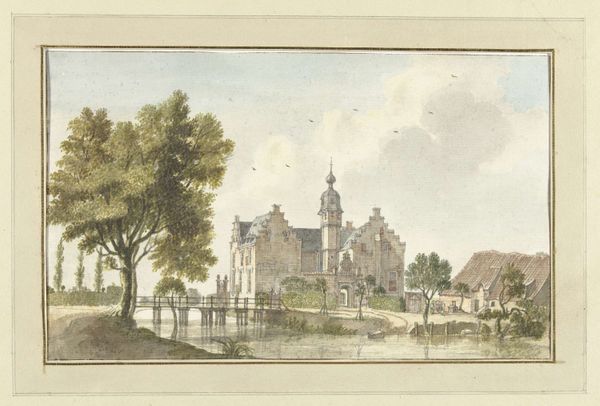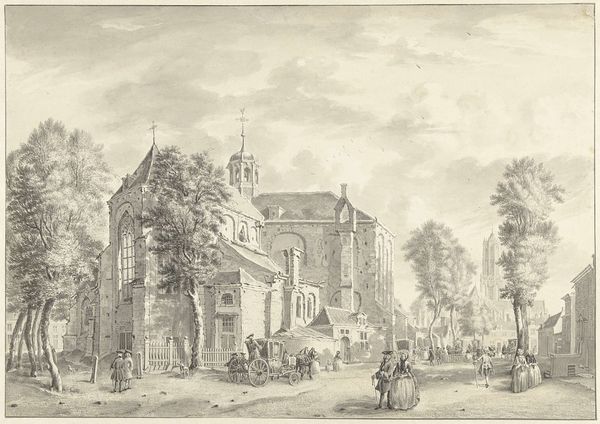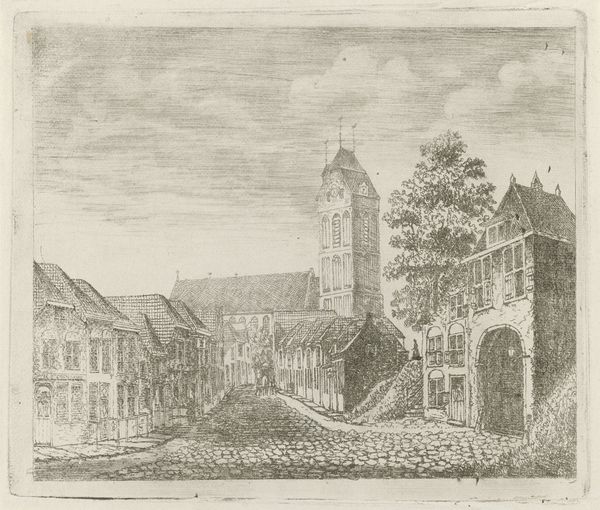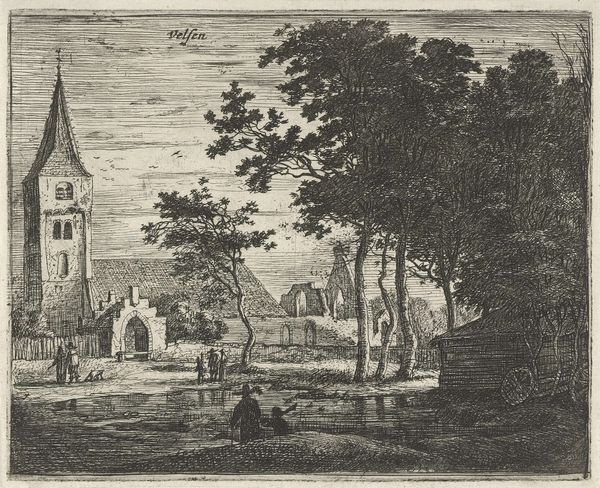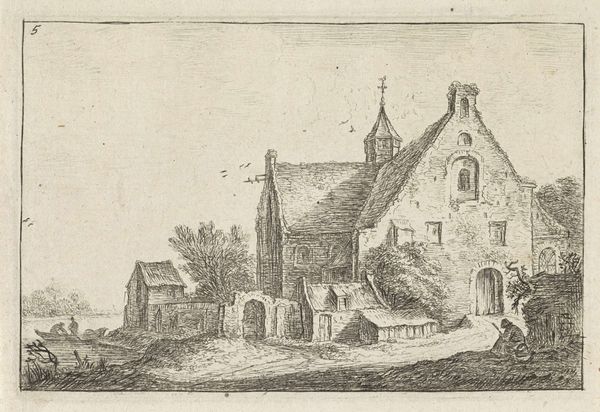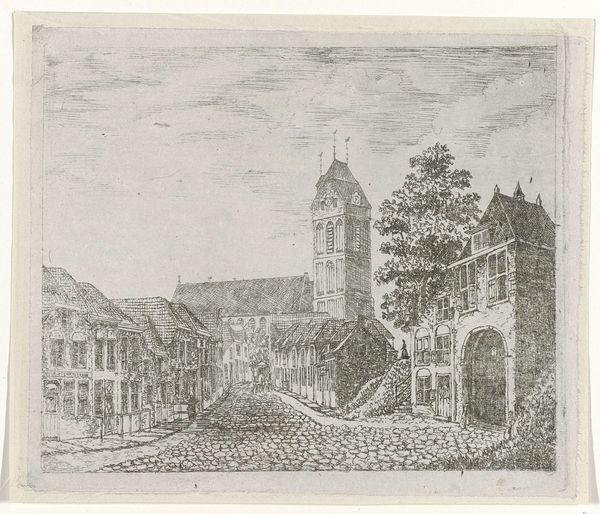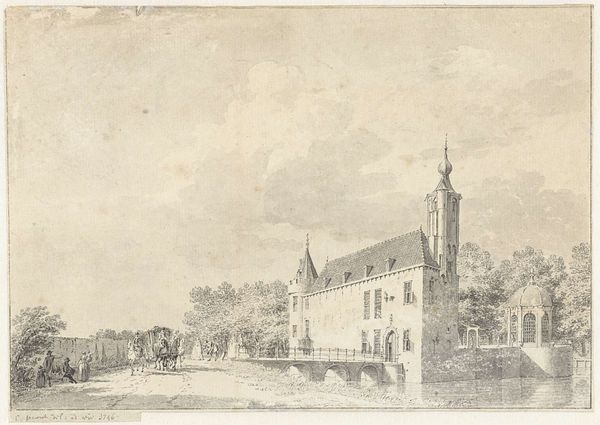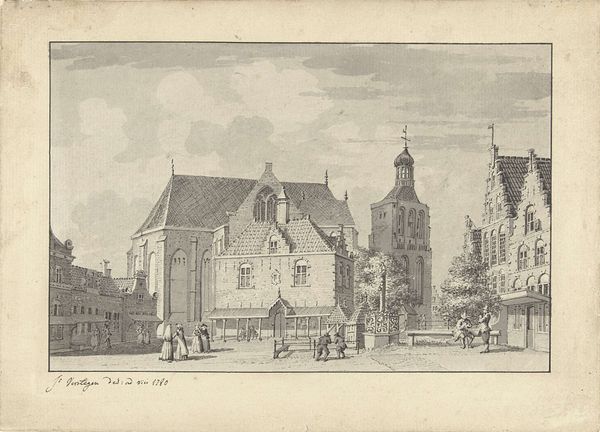
drawing, lithograph, print, paper, architecture
#
drawing
#
neoclacissism
#
lithograph
# print
#
landscape
#
paper
#
cityscape
#
architecture
Dimensions: 277 × 339 mm (image); 400 × 580 mm (sheet)
Copyright: Public Domain
Curator: Domenico Quaglio crafted this print, "Parish Church at Boppard on the Rhine," in 1822. The lithograph, drawn on paper, depicts the church amidst its urban landscape. Editor: It evokes such a serene feeling, doesn't it? The light is subtle, almost melancholic. The level of detail given to the church's architecture contrasted with the trees that softens the church's stoic effect on the landscape, is quite stark. Curator: Absolutely. We can observe the architectural details as they highlight a Neoclassical devotion to form and order, yet simultaneously they embrace Romanticism. The church emerges as a key visual and spiritual anchor, embodying communal identity during a period of significant societal shift, a testament to cultural endurance amid societal changes. Editor: That's fascinating. It positions the Church as a steady presence amid industrial development and growing class differences in the early nineteenth century. The people at the foreground— are they entering or leaving the building? How might their journeys and purposes within this architectural context influence and reinforce dominant societal roles? Curator: The building has symbolic value, definitely. Consider the directionality implied by the architectural forms — upward-pointing spires which inspire verticality in the viewer's own bodily experience. Buildings can carry all sorts of intentions. Editor: In that sense, considering what kinds of bodies these structures welcome—or actively exclude—tells a lot about societal dynamics at the time of creation, but also throughout the work's display. It also feels very telling of gender norms—what's a woman doing in front of this church in 1822? Curator: You are right in that these monuments remind us of who builds history, and whose history it becomes. The way the print frames nature, humanity, and spirituality as parts of an organic whole represents this kind of order, and perhaps the potential for social cohesion. Editor: This print certainly captures a specific moment, offering us insights into a bygone era—not only the Church and architecture, but the urban atmosphere too. Curator: I agree, it’s as though this image is able to reach through time. Editor: An evocative snapshot to inspire critical dialogues.
Comments
No comments
Be the first to comment and join the conversation on the ultimate creative platform.
